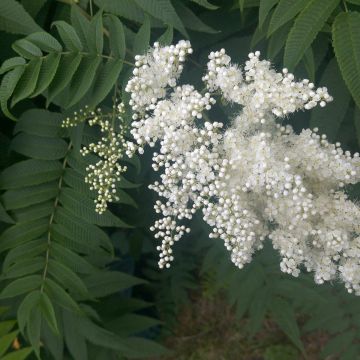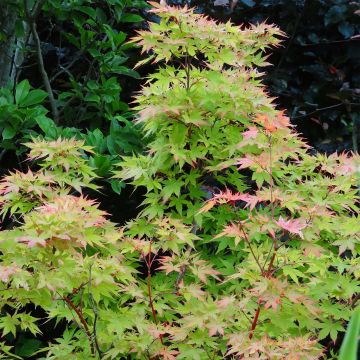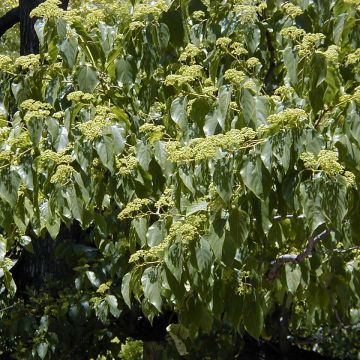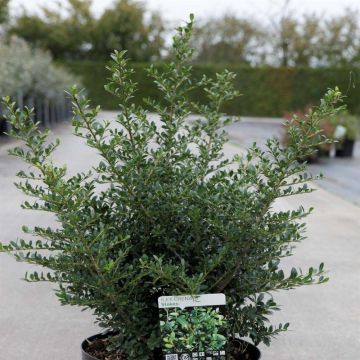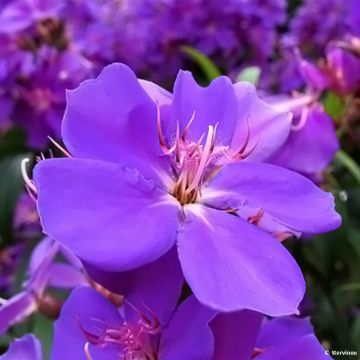

Sorbaria sorbifolia Pink Hopi
Sorbaria sorbifolia Pink Hopi
Sorbaria sorbifolia COUSORB05
Sorbaria
No issues with shipping and handling despite extremely hot weather. To be continued.
Alain, 19/08/2025
Special offer!
Receive a €20 voucher for any order over €90 (excluding delivery costs, credit notes, and plastic-free options)!
1- Add your favorite plants to your cart.
2- Once you have reached €90, confirm your order (you can even choose the delivery date!).
3- As soon as your order is shipped, you will receive an email containing your voucher code, valid for 3 months (90 days).
Your voucher is unique and can only be used once, for any order with a minimum value of €20, excluding delivery costs.
Can be combined with other current offers, non-divisible and non-refundable.
Home or relay delivery (depending on size and destination)
Schedule delivery date,
and select date in basket
This plant carries a 24 months recovery warranty
More information
We guarantee the quality of our plants for a full growing cycle, and will replace at our expense any plant that fails to recover under normal climatic and planting conditions.

Would this plant suit my garden?
Set up your Plantfit profile →
Description
The Sorbaria sorbifolia 'Pink Hopi' creates a sensation in the small world of false rowan-leaved spirea. This new variety is distinguished by its splendid spring foliage, which retains its pink, cream, and red-purple hues for almost 3 months in spring. Smaller in size than the wild species with beautifully layered growth, this bush also offers a summer flowering in airy white panicles. From its ancestor, 'Pink Hopi' has retained robustness and hardiness. Still, it is less prone to suckering and, therefore, more suitable for our gardens. This pretty novelty, with the appearance of a subtly coloured fern, will be particularly advantageous near natural ponds or water points.
The Sorbaria sorbifolia 'Pink Hopi' is a horticultural variety derived from Sorbaria sorbifolia, belonging to the Rosaceae family. It is native to Siberia (the Urals) and East Asia (China, Korea, Mongolia, and Japan). In nature, it is mainly found on the edge of forests and woodlands, usually on rich and moist soils, never in arid situations. The cultivar 'Pink Hopi' suckers less, has a more moderate growth, and an exceptionally long-lasting spring colouration. It will not exceed 1.60 m (5ft) in height and will occupy about 1 m (3ft) in width.
The False Spiraea with Sorbier leaves 'Pink Hopi' has a compact habit, upright and bushy. The primary asset of this bush is its foliage, for two reasons: its pinnate nature, finely cut, with toothed leaflets measuring 5 to 10 cm (2 to 4in) long, but also and above all, the symphony of colours it adorns itself with. The frost-resistant young shoots, which can withstand temperatures below -3°C (26.6°F), emerge in March with a dark red-purple hue. They gradually take on shades of pinkish beige, bronze and creamy white on a chartreuse green background until May. It is possible to prune some branches during the season to encourage the appearance of new coloured shoots until summer. The foliage turns purple again in autumn before falling. The flowering takes place in July-August as opulent pyramidal panicles of small creamy white flowers with a light and fluffy appearance. The bright brown to red branches remain decorative in winter.
False rowan-leaved spirea 'Pink Hopi' is a refined and versatile bush at ease in any good moist garden soil. It will find its place among large bushes and robust perennials, even in wet soil. Pair it with a purple Berberis for a splendid display. It is welcome in small gardens, where it breaks the monotony of green foliage, which is more classic. Also suitable for cultivation in large pots, it will offer the spectacle of its subtle and changing colours from spring to autumn, positioned on a patio or balcony. This bush will show its full potential at the edge of a water feature or pond. It will accompany other bushes such as Viburnum opulus, Itea virginiana, Fothergilla major, Salix purpurea nana, or moisture-loving perennials: Astilbe sinensis, Polygonum affine, Typha laxmanii, Eupatorium cannabinum, or the famous Gunnera manicata.
Report an error about the product description
Sorbaria sorbifolia Pink Hopi in pictures


Plant habit
Flowering
Foliage
Botanical data
Sorbaria
sorbifolia
COUSORB05
Rosaceae
Sorbaria
Cultivar or hybrid
Other Sorbaria
View all →Planting and care
Plant the Sorbaria sorbifolia 'Pink Hopi' in any good garden soil, neutral or slightly alkaline, humus-rich and fertile, but consistently moist, even in summer: dry situations should be avoided. It will thrive in full sun or partial shade but enjoys light, enhancing the foliage colours. This bush is very cold-resistant and particularly suited to humid soils. It flowers on the current year's wood; prune it a little during the season to encourage the appearance of young shoots and coloured leaves. You should watch for suckers, although this cultivar is less invasive than the type. Remove them easily with a garden fork.
Planting period
Intended location
Care
Planting & care advice
-
, onOrder confirmed
Reply from on Promesse de fleurs
Similar products
Haven't found what you were looking for?
Hardiness is the lowest winter temperature a plant can endure without suffering serious damage or even dying. However, hardiness is affected by location (a sheltered area, such as a patio), protection (winter cover) and soil type (hardiness is improved by well-drained soil).

Photo Sharing Terms & Conditions
In order to encourage gardeners to interact and share their experiences, Promesse de fleurs offers various media enabling content to be uploaded onto its Site - in particular via the ‘Photo sharing’ module.
The User agrees to refrain from:
- Posting any content that is illegal, prejudicial, insulting, racist, inciteful to hatred, revisionist, contrary to public decency, that infringes on privacy or on the privacy rights of third parties, in particular the publicity rights of persons and goods, intellectual property rights, or the right to privacy.
- Submitting content on behalf of a third party;
- Impersonate the identity of a third party and/or publish any personal information about a third party;
In general, the User undertakes to refrain from any unethical behaviour.
All Content (in particular text, comments, files, images, photos, videos, creative works, etc.), which may be subject to property or intellectual property rights, image or other private rights, shall remain the property of the User, subject to the limited rights granted by the terms of the licence granted by Promesse de fleurs as stated below. Users are at liberty to publish or not to publish such Content on the Site, notably via the ‘Photo Sharing’ facility, and accept that this Content shall be made public and freely accessible, notably on the Internet.
Users further acknowledge, undertake to have ,and guarantee that they hold all necessary rights and permissions to publish such material on the Site, in particular with regard to the legislation in force pertaining to any privacy, property, intellectual property, image, or contractual rights, or rights of any other nature. By publishing such Content on the Site, Users acknowledge accepting full liability as publishers of the Content within the meaning of the law, and grant Promesse de fleurs, free of charge, an inclusive, worldwide licence for the said Content for the entire duration of its publication, including all reproduction, representation, up/downloading, displaying, performing, transmission, and storage rights.
Users also grant permission for their name to be linked to the Content and accept that this link may not always be made available.
By engaging in posting material, Users consent to their Content becoming automatically accessible on the Internet, in particular on other sites and/or blogs and/or web pages of the Promesse de fleurs site, including in particular social pages and the Promesse de fleurs catalogue.
Users may secure the removal of entrusted content free of charge by issuing a simple request via our contact form.
The flowering period indicated on our website applies to countries and regions located in USDA zone 8 (France, the United Kingdom, Ireland, the Netherlands, etc.)
It will vary according to where you live:
- In zones 9 to 10 (Italy, Spain, Greece, etc.), flowering will occur about 2 to 4 weeks earlier.
- In zones 6 to 7 (Germany, Poland, Slovenia, and lower mountainous regions), flowering will be delayed by 2 to 3 weeks.
- In zone 5 (Central Europe, Scandinavia), blooming will be delayed by 3 to 5 weeks.
In temperate climates, pruning of spring-flowering shrubs (forsythia, spireas, etc.) should be done just after flowering.
Pruning of summer-flowering shrubs (Indian Lilac, Perovskia, etc.) can be done in winter or spring.
In cold regions as well as with frost-sensitive plants, avoid pruning too early when severe frosts may still occur.
The planting period indicated on our website applies to countries and regions located in USDA zone 8 (France, United Kingdom, Ireland, Netherlands).
It will vary according to where you live:
- In Mediterranean zones (Marseille, Madrid, Milan, etc.), autumn and winter are the best planting periods.
- In continental zones (Strasbourg, Munich, Vienna, etc.), delay planting by 2 to 3 weeks in spring and bring it forward by 2 to 4 weeks in autumn.
- In mountainous regions (the Alps, Pyrenees, Carpathians, etc.), it is best to plant in late spring (May-June) or late summer (August-September).
The harvesting period indicated on our website applies to countries and regions in USDA zone 8 (France, England, Ireland, the Netherlands).
In colder areas (Scandinavia, Poland, Austria...) fruit and vegetable harvests are likely to be delayed by 3-4 weeks.
In warmer areas (Italy, Spain, Greece, etc.), harvesting will probably take place earlier, depending on weather conditions.
The sowing periods indicated on our website apply to countries and regions within USDA Zone 8 (France, UK, Ireland, Netherlands).
In colder areas (Scandinavia, Poland, Austria...), delay any outdoor sowing by 3-4 weeks, or sow under glass.
In warmer climes (Italy, Spain, Greece, etc.), bring outdoor sowing forward by a few weeks.






























